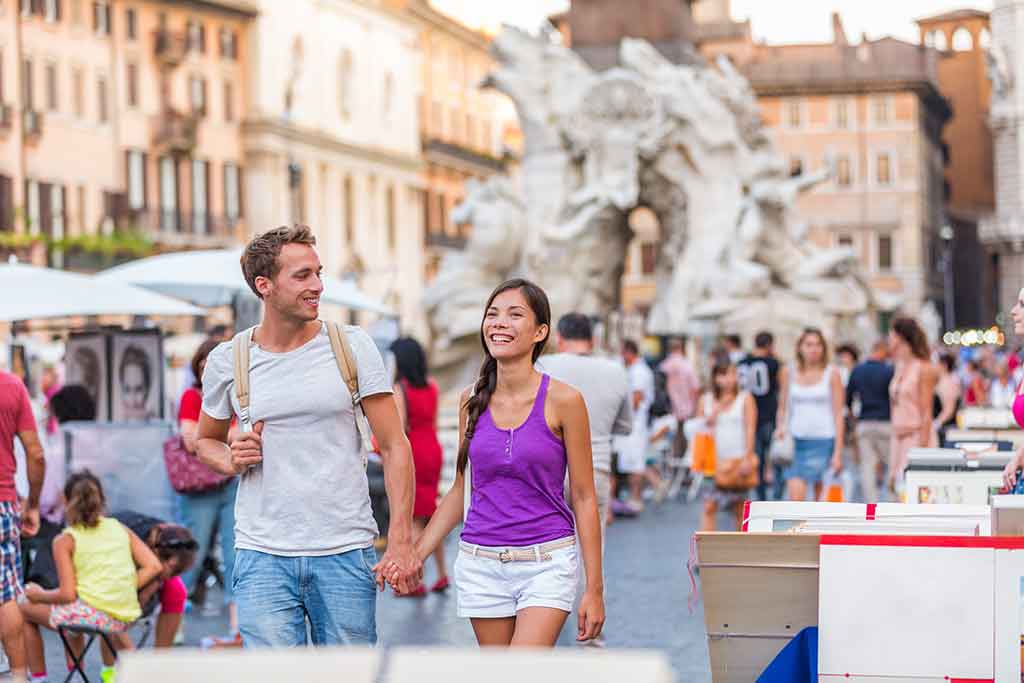Welcome
to Rome Italy. If you’are planning to visit Rome for your next trip and you are
looking for the best places to visit, here you’ll find tips and suggestions of most
popular point of interest and activities not to be missed in Rome and surrounding.
Travelers will appreciate this italian town with
his rich historical and artistic heritage, local culture and environment. Discover the monuments, buildings, natural
treasures and all the details that characterize Rome and its territory. Share and suggest a place you've
visited.

Couple of young tourists discovering Rome in one day
Pay your respects to the Pope in St Peter's Square, then relive Ancient Rome's gladiatorial battles in the Colosseum. Muse over Bernini's perfect marble sculptures in the Galleria Borghese and decipher the genius of Caravaggio in the city's churches. Before leaving, toss a coin in the Trevi Fountain to ensure your return.
Splash out on Armani, Gucci and Valentino designer labels on Via dei Condotti, then scour the Porta Portese market for retro finds. Antique furniture aficionados should visit the shops lining Via dei Coronari, lit by burning torches through winter, while art collectors should head for the galleries on Via Margutta.
Beat the city heat with a trip to the beach in Ostia or retreat to the lush grounds of Rome's Orto Botanico. Quench your thirst in the idyllic butterfly oasis in the Hotel de Russie garden, or make a splash in the open-air Piscina delle Rose swimming pool in Mussolini's dream suburb of EUR.
Rome celebrates summer with open-air cultural entertainment, including cinema screenings on Tiber Island, and music and dance performances in the Auditorium Parco della Musica and Villa Ada. Catch contemporary art exhibitions at the dynamic, futuristic-looking MAXXI arts museum.
Take an aerial perspective on the Eternal City's bizarre hotch-potch of ancient monuments, terracotta rooftops and modern high-rise apartment blocks from the hot-air balloon that flies daily over the Villa Borghese at the top of Via Veneto.
It's food time: start off with a classic pizza romana, then fill up on pasta all'amatriciana, a satisfying sauce of bacon, tomato and pecorino cheese.
written by Andrew adams - Last update: 24/11/2021